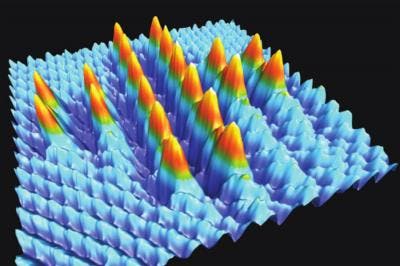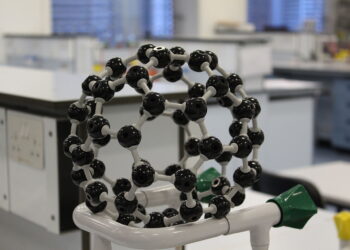Some applications require such a degree of precision that everything needs to be in exact order at the atom-scale. In an awesome feat of atomic manipulation, physicists from the University of Basel, in cooperation with team from Japan and Finland, have placed 20 atoms atop an insulated surface in the shape of a Swiss cross. Such experiments have been achieved with success before, but the real highlight is that this is the first time anything like this was made at room temperature.

Since the 1990s, scientists have been able to manipulate surface structures by individually moving and positioning atoms. This sort of demonstrations, however, were made mainly atop conducting or semi-conducting surfaces and only under very low temperatures. Fabricating artificial structures on fully insulated surfaces and at room temperature has always proven to be a challenge, but the international effort proved it is possible.
[RELATED] IBM develops smallest storage device: 12 atoms for a single bit!
The team led by Shigeki Kawai and Ernst Meyer from the Department of Physics at the University of Basel used an atomic force microscope to place single bromine atoms on a sodium chloride surface. Upon reacting with the surface, the bromine atoms would exchange position with chloride and the researchers carefully repeated each step until they formed a lovely Swiss cross made up of 20 such atoms. It’s so small that the surface area measures only a whooping 5.6 nanometers square. Effectively, the demonstration represents the largest number of atomic manipulations ever achieved at room temperature.
[ALSO READ] Incredible molecular imaging shows how chemical bonds really look like for the first time
By proving atomic manipulation at this scale is achievable under room temperature, the scientists help pave the way for the next generation of electromechanical systems, advanced atomic-scale data storage devices and logic circuits that will most likely use a scaled version of their process.
The paper appeared in the journal Nature Communications.






